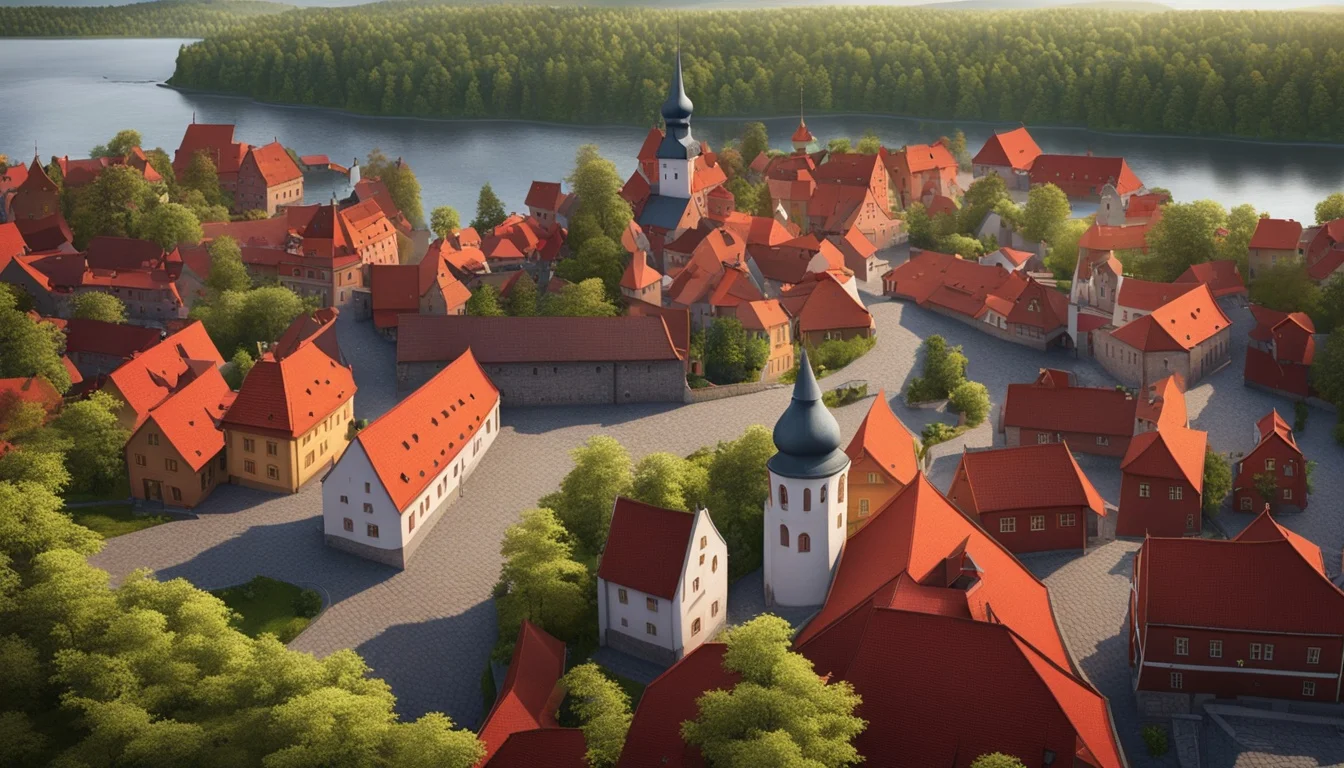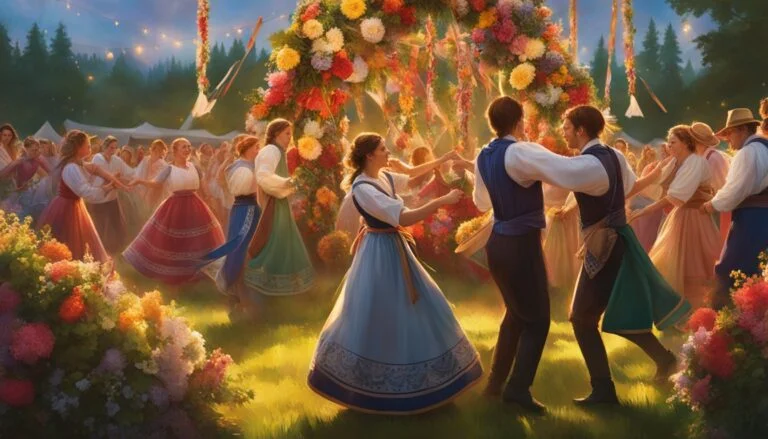Step Back in Time: Explore These Historical Landmarks in Finland!
What if you could step back in time and experience the rich tapestry of Finland’s history firsthand? From medieval castles to industrial landscapes, the Nordic nation boasts a treasure trove of captivating historical sites that offer a glimpse into its past1. Prepare to embark on a journey through Finland’s storied past and uncover the stories that have shaped this nation’s identity.
Key Takeaways
- Finland’s historical landmarks span centuries, from medieval fortresses to 19th-century industrial sites.
- Iconic landmarks like Turku Castle, Olavinlinna, and Helsinki Cathedral showcase Finland’s architectural heritage.
- UNESCO World Heritage Sites, such as Verla Groundwood and Board Mill, offer insights into Finland’s industrial past.
- Visiting these historical sites allows you to immerse yourself in Finland’s rich cultural and military history.
- Exploring Finland’s historical landmarks can provide a deeper understanding of the country’s evolution and national identity.
The UNESCO World Heritage Sites of Finland
Finland is a veritable treasure trove of cultural and natural wonders, boasting an impressive seven UNESCO World Heritage Sites234. These sites offer visitors a unique glimpse into the country’s rich heritage and stunning natural beauty.
The Old Rauma, a thriving residential and working community, is one of Finland’s most well-preserved wooden towns, with charming cobblestone streets and historic buildings dating back to the 18th century34. The Fortress of Suomenlinna, founded in 1748 on seven islands near Helsinki, is another UNESCO site that showcases Finland’s impressive coastal defenses4.
The Kvarken Archipelago, shared with Sweden, is a stunning natural site featuring thousands of islands in the Gulf of Bothnia, showcasing the effects of post-glacial rebound34. The Struve Geodetic Arc, a transnational site listed in 2005, includes 34 points in ten countries, with six station points located in Finland234.
These UNESCO World Heritage Sites in Finland offer visitors a unique opportunity to immerse themselves in the country’s rich history, cultural traditions, and natural wonders. From the historic towns to the breathtaking natural landscapes, these sites are a true testament to Finland’s enduring legacy234.
Helsinki’s Iconic Architectural Wonders

Helsinki, the capital of Finland, is a city that seamlessly blends its rich history with modern architectural marvels. From the grand neoclassical Helsinki Cathedral to the UNESCO World Heritage-listed Suomenlinna Sea Fortress, visitors can immerse themselves in the city’s diverse architectural landscape5.
One of the city’s most unique landmarks is the Temppeliaukio Church, also known as the “Church of the Rock.” This Lutheran chapel is carved directly into solid rock, creating an awe-inspiring interior with excellent acoustics that hosts regular concerts5.
The iconic Sibelius Monument, dedicated to the renowned Finnish composer, is another must-see attraction in Helsinki. This unique sculpture, resembling a giant organ pipe, stands as a testament to Finland’s rich cultural heritage6.
Helsinki’s architectural wonders extend beyond its landmarks. The city is home to the Design Museum and the Museum of Finnish Architecture, offering visitors a deeper appreciation for Finland’s design and architectural legacy5.
The Finlandia Hall, designed by the acclaimed Finnish architect Alvar Aalto, is considered one of his most iconic accomplishments and a testament to the city’s architectural prowess5. The Helsinki Hall of Culture, with its mid-century modern design and exceptional acoustics, has hosted numerous cultural events and performances, cementing its status as a hub for the arts7.
From the neoclassical grandeur of the Helsinki Cathedral to the contemporary elegance of the Oodi Central Library, Helsinki’s architectural landscape offers a captivating blend of styles that showcase the city’s rich cultural heritage and modern aspirations657.
Historical Landmarks in Finland

Finland is a country rich in historical landmarks, boasting an array of well-preserved medieval castles and fortresses. Among the most impressive is Turku Castle, one of the largest intact medieval buildings in Finland8. This stronghold, which has also served as a granary and prison over the centuries, offers visitors a glimpse into the country’s past8.
Another notable historical site is Hame Castle, dating back to the late 13th century. This royal residence has also been used as a granary and prison, providing insight into Finland’s rich history8. Kastelholm Castle on the Åland Islands, Bomarsund Fortress in Åland, and Raseborg Castle in southern Finland are additional examples of well-preserved historical landmarks that showcase Finland’s medieval architectural wonders8.
These historical landmarks in Finland not only captivate visitors with their architectural beauty but also tell the stories of the country’s past9. From the grand Turku Castle to the imposing Hame Castle, these medieval fortresses and castles offer a window into Finland’s fascinating history and the lives of its people9810.
Explore the Enchanting Lapland Region

Nestled in the northernmost reaches of Finland, the Lapland region is a veritable treasure trove of cultural and natural wonders11. This enchanting winter wonderland offers visitors the opportunity to witness the mesmerizing Northern Lights and embark on thrilling husky safaris11. Beyond the snowy landscapes, Lapland is also home to the indigenous Sami culture, with the Siida Museum in Inari providing a comprehensive look at their rich traditions and heritage.
For those seeking to delve deeper into the natural history and culture of Lapland, the Arktikum Science Museum in Rovaniemi is a must-visit destination12. This captivating museum offers insights into the region’s unique Arctic environment and the vibrant indigenous cultures that have thrived in this rugged landscape for centuries13. Nearby, the iconic Santa Claus Village, situated just a stone’s throw away from the Arctic Circle, celebrates the festive spirit and provides a magical experience for visitors of all ages.
Venture beyond the cultural attractions, and you’ll discover the Ranua Wildlife Park, where visitors can observe the region’s diverse Arctic wildlife, including the majestic polar bears11. Whether you’re drawn to the Lapland region’s captivating indigenous culture, breathtaking natural wonders, or the enchantment of the Santa Claus Village, this enchanting corner of Finland promises an unforgettable journey of discovery111213.
Ancient Fortresses and Castles of Finland

Finland is a country steeped in a rich military history, and this legacy is preserved in its ancient fortresses and medieval castles. These historical landmarks offer a captivating glimpse into the nation’s past, transporting visitors back in time to the strategic battles and architectural triumphs that have shaped the country14.
Among the most significant ancient fortresses in Finland is the Hameenlinna Fortress, situated on the scenic shores of Lake Vanajavesi14. This fortress, thought to date back to the end of the 13th century, has a remarkable history, having served as a prison from 1837 to 197214. Visitors can explore the well-preserved castle walls and towers, immersing themselves in Finland’s military past14.
The Olavinlinna Castle in Savonlinna is another iconic medieval castle that has captured the imagination of visitors14. Founded in 1475, this three-towered castle is one of Finland’s most popular tourist attractions, renowned for its stunning architectural features and its annual opera festival14. The Turku Castle, over 700 years old, is one of the oldest buildings still in use in Finland and is considered one of the largest medieval castles in the Nordic countries14.
Beyond these well-preserved castles, Finland is home to a number of *ancient fortresses* that have been meticulously restored, including Hamina, Lappeenranta, and Kärnäkoski Fortress in Savitaipale14. These fortifications, built as part of the country’s defense systems, offer visitors a unique opportunity to explore Finland’s military history and the strategic importance of these sites over the centuries14.
The presence of these *ancient fortresses* and *medieval castles* in Finland is a testament to the country’s rich cultural heritage and the enduring legacy of its military past14. From the towering walls of Olavinlinna to the well-preserved halls of Hameenlinna, these historical landmarks continue to captivate and inspire visitors, inviting them to step back in time and uncover the fascinating story of Finland’s past1415.The earliest *medieval castles* in Finland were constructed during the Swedish crusades in the 12th and 13th centuries, as the Scandinavian kingdom sought to solidify its control over the region15. These fortifications, such as Turku Castle and Häme Castle, served as centers of administration and military power, playing a crucial role in the expansion of Swedish influence in Finland15. Over the centuries, these *medieval castles* withstood numerous sieges and conflicts, testifying to the strategic importance of these sites in the region’s tumultuous history1516.Finland’s *ancient fortresses* and *medieval castles* continue to captivate visitors from around the world, offering a unique window into the country’s rich cultural and military heritage16. From the imposing Suomenlinna fortress off the coast of Helsinki to the well-preserved Turku Castle and the picturesque ruins of Raseborg Castle, these historic landmarks serve as tangible reminders of Finland’s past, inspiring awe and wonder in all who explore them16.
Indigenous Sami Cultural Sites
Finland’s northern regions have been home to the indigenous Sami people for thousands of years, leaving behind a rich tapestry of cultural sites that offer a glimpse into their unique way of life and traditions17. The Sami Museum Siida in Inari provides a comprehensive exploration of Sami culture, housing a vast collection of traditional artifacts, clothing, and handicrafts18.
For an immersive Sami cultural experience, visitors can head to the Sami Cultural Centre Sajos, also in Inari, where they can witness the vibrant traditions of Sami music, dance, and storytelling17. Further west, the Sami Siida Village in Levi offers an authentic glimpse into the Sami lifestyle, while the Jokkmokk Market in Sweden, just across the border, is one of Scandinavia’s oldest marketplaces where Sami people gather to sell their traditional products17.
Metsähallitus, the Finnish state-owned enterprise, manages a number of Sami cultural heritage sites in Northern Lapland, including reindeer separation areas and old settlements17. These sites are not only historical landmarks but also heritage biotopes, preserving the region’s biodiversity and traditional landscapes through activities like mowing and grazing17.
The Sami’s cultural diversity is further reflected in the three distinct Sami languages spoken in Finland: Inari, Skolt, and North Sami17. Information on Sami culture and heritage is available in these languages on Metsähallitus’ Lundui.fi website and through various publications17. The Siida Museum, the Fell Lapland Visitor Centre in Hetta, and other cultural institutions serve as vital showcases of Sami history and traditions17.
The Sami people’s connection to their land and traditions continues to be preserved and celebrated, offering visitors a unique opportunity to immerse themselves in this vibrant indigenous culture191718.
Conclusion
Finland is a country rich in cultural and historical sites, offering visitors a diverse range of experiences that showcase the nation’s fascinating past and vibrant present20. From UNESCO World Heritage Sites like the Suomenlinna Sea Fortress and Turku Castle, to iconic architectural wonders such as the Temppeliaukio Church, Finland boasts a wealth of historical landmarks that captivate travelers interested in history, architecture, and the natural world20.
Whether you’re exploring the bustling capital of Helsinki, the historic city of Turku, or the enchanting wilderness of Lapland, you’ll find a wealth of cultural and historical sites that provide a deep understanding of Finland’s heritage and its enduring charm21. From the medieval fortresses of Kuusisto Castle and Porvoo Cathedral to the renowned Savonlinna Opera Festival at Olavinlinna Castle, Finland’s rich history and tradition are on full display21.
With its unique cultural blend of tradition and modernity, Finland consistently ranks among the happiest countries in the world, offering visitors a high quality of life and a truly memorable travel experience21. As you explore the diverse cultural and historical sites across Finland, you’ll gain a deeper appreciation for the nation’s captivating past and its enduring appeal as a premier travel destination22.






